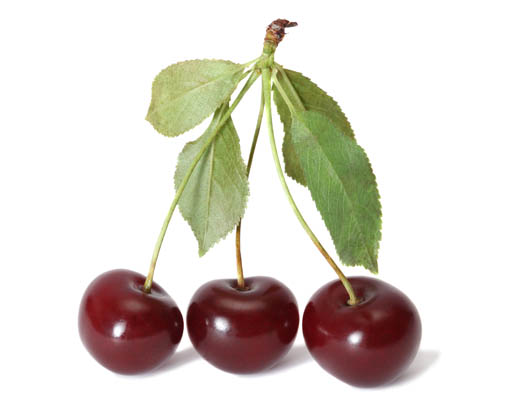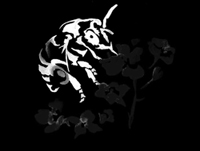Sour Cherries (Prunus avium)

Mating & Breeding System: All flowers in the genus Prunus are similar to those of apple and pear, except that they only possess one style and one ovary containing a pair of ovules. Most cultivars of sour cherry are self-compatible, although insects can still play an important role in moving pollen to the stigma.
Pollination, Quality & Yield: Sour cherry is self-fertile and does not require pollinizers in the orchard. However, the presence of honey bees can increase yield by 2-4 times if the orchard is large, or if the wild pollinator community is lacking.
Growers should note that it is possible for "over-pollination" to occur in self-compatible stone fruit crops. If this happens, the trees attempt to mature too many fruits for the available resources. The result is a high yield by weight, but with a large proportion of the fruit undersized. If over-pollination is a problem in a particular orchard, growers should reduce or eliminate their use of supplementary pollination services.
Pollination Recommendations: The use of honey bees is considered "optional" with sour cherry, particularly when wild pollinator populations are healthy. If adding pollinators, the recommended rate is 2.5-5 strong colonies per hectare, to be placed in the orchard by the time of first bloom.
Because cherries bloom early and honey bees will not forage below 15°C or in windy or damp conditions, fruit set and yield may suffer. Hives should face to the south, to facilitate warming in the morning and encourage bee activity.
Both bumble bees and blue orchard bees have demonstrated potential for pollinating early-blooming tree fruit crops, although research is necessary into their effectiveness for this particular crop in Ontario. Wild bees and possibly even flies may also be valuable, particularly in small orchards adjacent to suitable wild habitat, although management tactics to increase their populations would be required in most situations.
References
Benedek, P., Nyeki, J., Szabo, Z. and Szabo, T. 2005. Both self-sterile and self-fertile sour cherries need insect (bee) pollination. Acta Horticulturae 667:399-402.
Bosch, J. & Kemp, W.P. 1999. Exceptional cherry production in an orchard pollinated with blue orchard bees. Bee World 80:163-173.
Bosch, J., Kemp, W.P., & Trostle, G.E. 2006. Bee population returns and cherry yields in an orchard pollinated with Osmia lignaria (Hymenoptera: Megachilidae). Journal of Economic Entomology 99:408-413.
Delaplane, K.S. & Mayer, D.F. 2000. Crop Pollination by Bees. CABI Publishing, New York.
Free, J.B. 1993. Insect Pollination of Crops, 2nd edition. Academic Press.
Scott-Dupree, C.D. & Winston, M.L. 1987. Wild bee pollinator diversity and abundance in orchard and uncultivated habitats in the Okanagan Valley, British Columbia. Canadian Entomologist 119:735-745.
Scott-Dupree, C.D., Winston, M., Hergert, G., Jay, S.C., Nelson, D., Gates, J., Termeer, B., & Otis, G. 1995. A guide to managing bees for crop pollination. Canadian Association of Professional Apiculturists, Aylesford NS.
Slingerland, K. & Lay, B. 2002. Cherry cultivars - sweet and tart. OMAFRA FactSheet 02-037.
Thomson, J.D. & Goodell, K. 2001. Pollen removal and deposition by honeybee and bumblebee visitors to apple and almond flowers. Journal of Applied Ecology 38:1032-1044.
